Rare Rides Icons, The Nissan Maxima Story (Part VII)

Unlike its third generation which had the upmarket sporty sedan segment largely to itself, when the fourth generation Maxima (A32) arrived in 1995 there were numerous new competitors from all directions. In its home market, the American-centric Maxima faded away and was replaced by the more internationally flavored Cefiro. Notably, the Cefiro wore Infiniti I30 styling in advance of its North American debut. In addition to the handful of variants for other markets like the Maxima QX and QX (which both wore Cefiro clothes), the A32 Maxima was also transformed into a very important car for the Korean market. Let’s talk about some business deals.
Samsung had a wide variety of hugely successful businesses in the Nineties (electronics, housing, shipping, shipbuilding, banking, life insurance, theme parks, advertising, IT), and created Samsung Motors circa 1994. Samsung’s chairman at the time realized he could leverage the parts and know-how already available in Samsung’s electronics divisions to good use in cars. The earliest days of the company were largely focused on heavy trucks, and Samsung found product development support from Nissan Diesel.
Things were off to a good start, but the joy of a new car company didn’t last long. Though the financial crisis affected Japan primarily, its waves spread across all of Asia and hit South Korea as well. Samsung almost immediately changed course and planned to dump the limited assets it had in its new car-making venture. But that required a financial partner, something hard to come by at the time.
As expected, Samsung looked for a domestic deal first. There was consideration to a merger with Daewoo, but then GM bought it. Talks occurred with Hyundai for a purchase as well, but Samsung and Hyundai had a long history as competing chaebol (Korean conglomerates) and conversation was full of angst and went nowhere. Circa 1996, Samsung separated itself from Samsung Motors International, and put the division up for sale.
Meanwhile across the sea, Nissan was still friendly with Samsung Motors and was still providing “technical assistance.” The two firms’ cooperation was quite a bit deeper than that term would imply. Nissan provided tooling and engines to Samsung, which enabled the company to build its first car domestically - the Cefiro.
Samsung built the Cefiro and called it the SM5 when it entered production in 1998. A mix of original Cefiro styling and some of Samsung’s own trim, the SM5 used Nissan engines and had a Cefiro interior rebranded with Samsung logos that were made of Korean materials. It was (and is) very important for the car to wear Korean domestic branding and be built domestically. The Korean market consumer places much importance on such a “home car.”
With otherwise identical measurements to the Japanese market Cefiro, the SM5 had one alteration: When equipped with a V6, it had a higher ride height of 56.1 inches, versus 55.7” in four-cylinder models. Engines for the SM5 included the 2.0 SR20DE used in the spicy Sentra SE-R and the Infiniti G20, as well as a 2.0-liter VQ20DE V6 from the Japanese Cefiro.
The SM5 also borrowed the 2.5-liter VQ25DE V6. Other than Samsung vehicles, the 2.5 was restricted to JDM Nissans. Finally, top spec SM5s used the 3.0-liter VQ30DE as equipped in US market Maximas and the Infiniti I30. Transmissions were standard Maxima fare and included a five-speed manual and a four-speed automatic.
When it debuted in 1998 the SM5 existed as Samsung’s only passenger car and would hold the title until the 2002 introduction of the smaller SM3. Primarily a South Korean market car, the SM5 was sold in limited other markets and was marketed in Chile as the SQ5. All SM5s were built in Busan, South Korea, a city not previously known for automobile manufacture.
Right around the time the SM5 reached dealers in Korea, Renault was making its move toward a “strategic alliance” with Nissan. The French giant also took a look at what Nissan was doing with Samsung and their new SM5. Since Renault was already buying into Nissan’s woes, it was conveniently timed that Samsung Motors was also strapped for cash, and still up for sale. Official negotiations between Renault and Samsung started in December 1998.
Shortly thereafter on March 27, 1999, the alliance between Renault and Nissan was cemented. Renault purchased 36.8 percent of Nissan’s stock for $3.5 billion. In exchange, Nissan promised to buy some of Renault when it was back on its feet. Nissan did so in 2001 and acquired 15 percent of Renault. In exchange, Renault increased its ownership to 43.4 percent at the same time.
Between stage one and stage two of Renault’s investment in Nissan, it also purchased a large share of Samsung Motors International. The deal took nearly two years, but in September of 2000 Renault bought 70 percent of SMI for $560 million. Samsung got the wealthy business partner they wanted and a supply of car designs, and Renault secured immediate entry into the growing South Korean car market. Win-win. Renault rebranded SMI to Renault Samsung Motors immediately.
The SM5 grew immediately more popular when it became an official taxi in its home city of Busan. Consumers saw the sedans on the roads where they appeared reliable and durable under hard use, which built confidence in a Samsung automobile. Taxi versions used the base inline-four engine, while upmarket SM5s often wore I30-like trim and wheels and used the 2.5-liter V6. Hood ornaments were reserved for more expensive trims, like the 525V shown.
Given its immediate success, Samsung was hesitant to change the SM5. It existed in its original guise from 1998 to 2003, at which point it was lightly revised with new front and rear clips. By the time the A32-based SM5 was facelifted the rest of the world was already at the end of the fifth-generation Maxima, and the sixth-gen arrived in 2004.
The SM5 had three years in its refreshed guise, which was 0.4 inches longer than the original version courtesy of some thicker bumpers. For 2005 it was replaced by a new, larger SM5 based on Nissan’s FF-L front-drive platform. Though the second SM5 used the same platform as the Altima and Maxima, its bodywork was that of the Teana. Teana was a new model in 2003 in international markets, and was also sold in Japan as the Cefiro, and rebadged in France as the Renault Safrane.
The A32 Maxima was the start of it all for Samsung’s passenger vehicles, and the company stated that between 1998 and 2012 it produced 680,000 examples of the SM5. The company had a fairly full line by the end of the 2000s, though that’s been reduced to just five vehicles today (all rebadges of Renaults).
And now you know more about the Nissan-Samsung-Renault Maxima-Cefiro-SM5 than you ever thought possible. In our next installment, we’ll return back to where we started, with the North American Maxima that debuted in 1995.
[Images: Samsung]
Become a TTAC insider. Get the latest news, features, TTAC takes, and everything else that gets to The Truth About Cars first by subscribing to our newsletter.

Interested in lots of cars and their various historical contexts. Started writing articles for TTAC in late 2016, when my first posts were QOTDs. From there I started a few new series like Rare Rides, Buy/Drive/Burn, Abandoned History, and most recently Rare Rides Icons. Operating from a home base in Cincinnati, Ohio, a relative auto journalist dead zone. Many of my articles are prompted by something I'll see on social media that sparks my interest and causes me to research. Finding articles and information from the early days of the internet and beyond that covers the little details lost to time: trim packages, color and wheel choices, interior fabrics. Beyond those, I'm fascinated by automotive industry experiments, both failures and successes. Lately I've taken an interest in AI, and generating "what if" type images for car models long dead. Reincarnating a modern Toyota Paseo, Lincoln Mark IX, or Isuzu Trooper through a text prompt is fun. Fun to post them on Twitter too, and watch people overreact. To that end, the social media I use most is Twitter, @CoreyLewis86. I also contribute pieces for Forbes Wheels and Forbes Home.
More by Corey Lewis
Latest Car Reviews
Read moreLatest Product Reviews
Read moreRecent Comments
- Kwik_Shift_Pro4X Canadians are able to win?
- Doc423 More over-priced, unreliable garbage from Mini Cooper/BMW.
- Tsarcasm Chevron Techron and Lubri-Moly Jectron are the only ones that have a lot of Polyether Amine (PEA) in them.
- Tassos OK Corey. I went and saw the photos again. Besides the fins, one thing I did not like on one of the models (I bet it was the 59) was the windshield, which looked bent (although I would bet its designer thought it was so cool at the time). Besides the too loud fins. The 58 was better.
- Spectator Lawfare in action, let’s see where this goes.



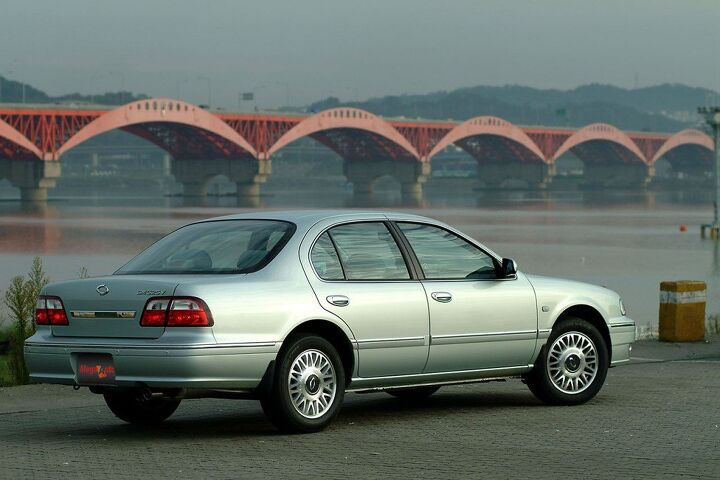
























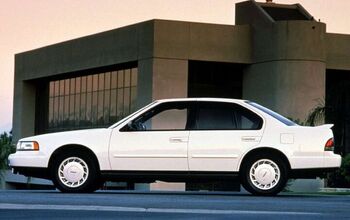
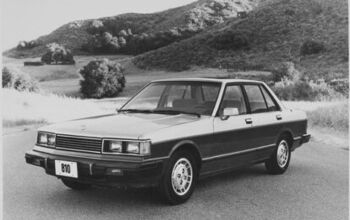
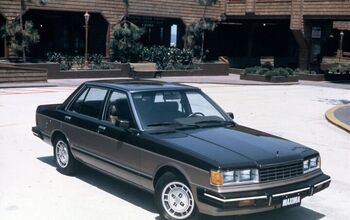
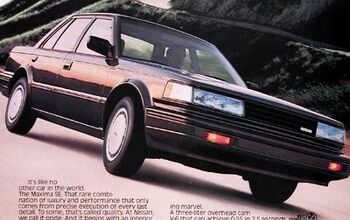










Comments
Join the conversation
I thought this was going to be about the 4th gen Maxima. Guess I'll have to wait for the next installment.
I had a 1996, so I'm curious.
I am curious as to the 56.1" ride height, that has to be a interesting looking vehicle sitting that high considering that the Maxima had an overall height of 55.7 inches.